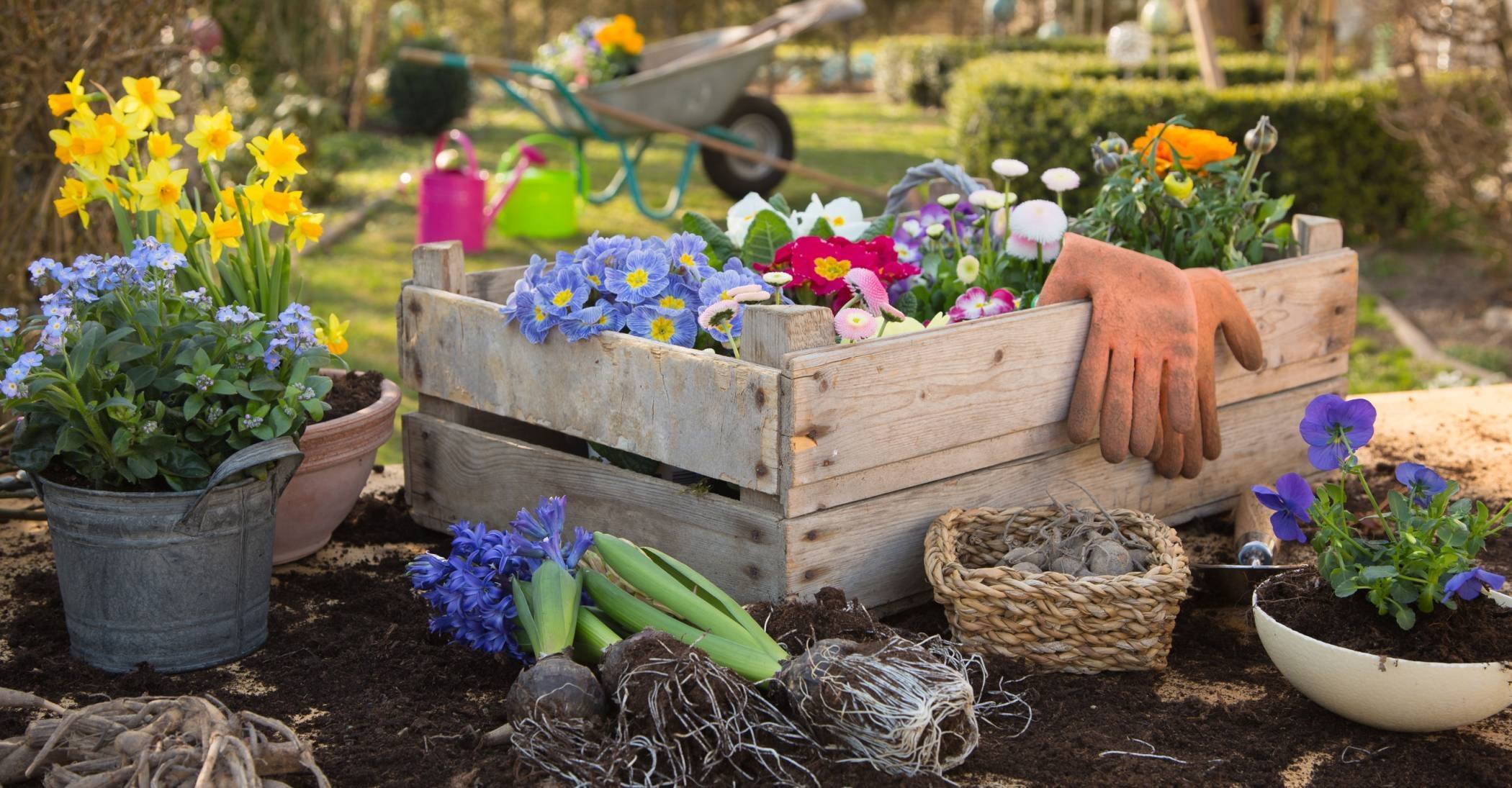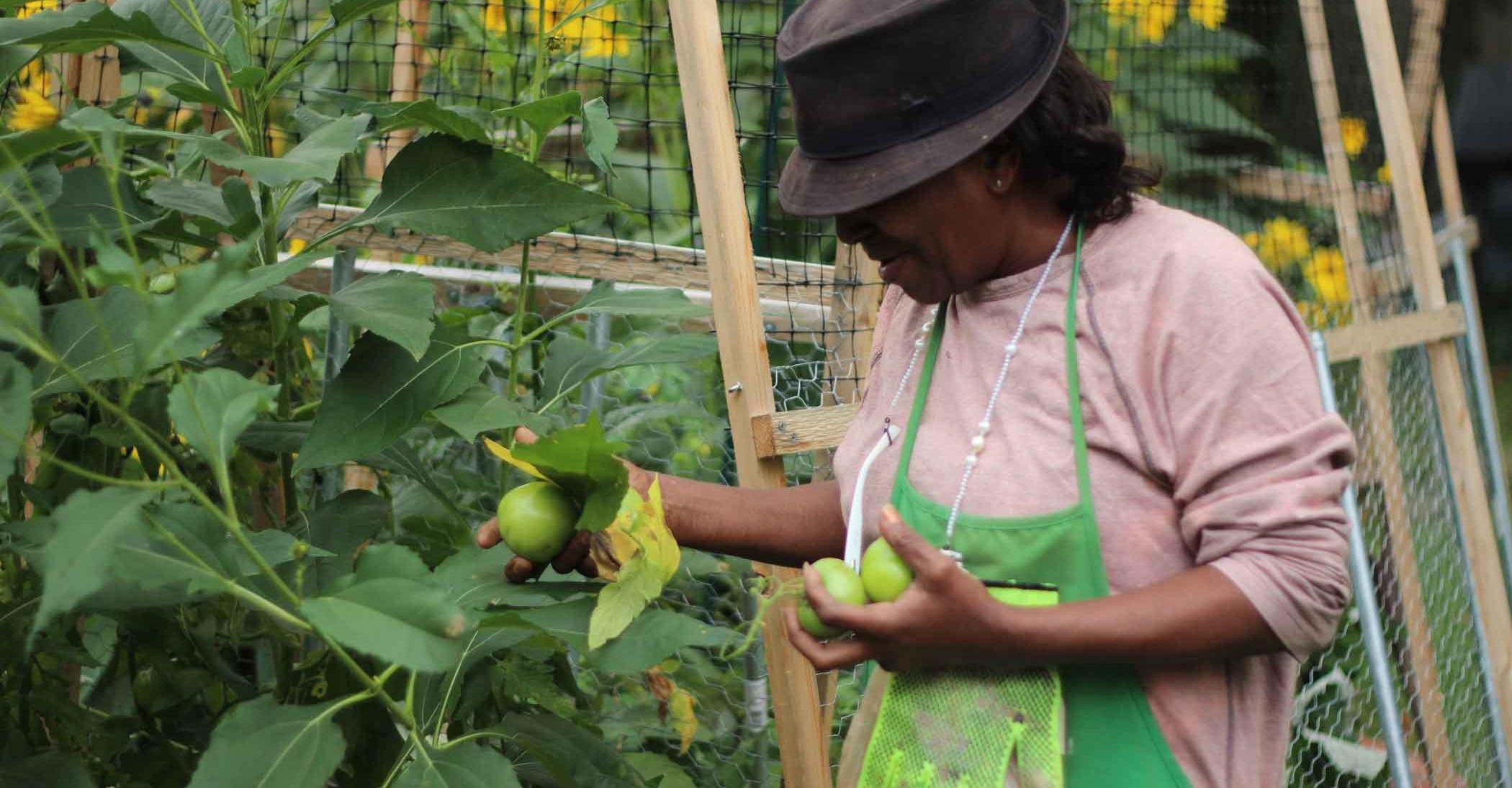Sustainable Landcare Principles
 9 Principles of Sustainable Landcare
9 Principles of Sustainable Landcare
At Phipps, the following principles that drive our work in sustainable landcare and form our understanding of why we care for the land the way that we do. Sustainable Landcare is defined as caring for the land in a way that mimics natural systems and creates healthy soil, plants and people.
We offer these princples as a public resource and guide to others. Model your work on these concepts to maximize beauty and eco-consciousness in your own gardening! See the Sustainable Landcare Pocket Guide for more information.

1. Be Observant
Observing your yard and the surrounding area is important to do when you first design your garden and to continue to do as you maintain your garden. Observe the patterns of the sun, the way water moves or gathers on your property, and the way you, your family, and wildlife interact with the area. Soil tests will give you a clear idea of your soil conditions. All of this information will help you decide the best placement of gardens, storage spaces and gathering places as well as guide the plants that you choose. Regular observations of your yard will allow you to spot pest and disease concerns before they become a problem and may give you an idea to their cause. Plus it’s fun to watch your garden change and grow.

2. Grow Healthy Plants
With the knowledge gleaned from your yard, you will be able to choose appropriate plants for your yard. Plants most suited to your yard’s existing light, moisture, and soil conditions will be healthier and need less care. Choose plants to match each unique area of your yard, for example; plants for wet shade or dry sunny spots, or deer-resistant hillside plants. Choose native and sustainable plants that have non-invasive habits, are resistant to disease and insects, and require minimal watering and fertilization, once established. Practice preventative care by learning the proper planting, mulching, pruning, watering and other management strategies that will keep your plant healthy and happy.

3. Build and Maintain Healthy Soil
Healthy soil leads to healthy plants. Plants that have access to needed minerals and nutrients, as well as bacteria and fungi, will be less susceptible to pest and disease, similar to humans with strong immune systems. Topsoil takes hundreds of years of weathering to develop, so value the soil that you do have and encourage the development of humus, the breakdown of organic material by soil microorganism and worms. Adding compost and mulch provide protection for your plants and soil organisms break them down leaving healthy soil full of minerals and nutrients for plants. Place dead plants into compost bins or leave them to rot in place (as a green manure) to create healthy soil for future plants. Fallen leaves contain valuable minerals and nutrients, so keep them on your property feeding your gardens, not in plastic bags littering a landfill. You will find that the more materials you leave to break down on-site, the less store bought soil you need.

4. Conserve Water and Protect Water Quality
Locally, water is abundant. The real challenge is to slow down and capture as much of this resource as possible when it hits your property as rain, so that it doesn’t overflow our storm water system. Rain barrels can catch water moving off your roof, down spouts can direct water to rain gardens, and berms on a sloping hillside can slow water down. Tree roots and healthy soil help water absorb into the ground, where it is cleaned and stored. Irrigating with rain water from a storage container saves money and conserves drinking water. Water new plantings with an inch of water per week (including rain). Once established, native and sustainable plants will not need added water unless there are periods of extreme drought. Further protect water quality by avoiding use of harmful chemical pesticides and fertilizers that can wash off your yard and pollute local waterways.

5. Encourage Biodiversity
Gardens are small ecosystems, encourage and support them with a variety of plants and habitat elements (food, water, shelter, and hiding places). A diversity of plants in your backyard can attract birds, native bees, and butterflies with flowers that produce seeds or pollen and nectar. Beneficial insects attracted to your yard by pollen and nectar producing plants act as pest control, feeding on the insects and pests that feed on your plants. Your yard overall is more resilient when planted with a diversity of herbs, shrubs and trees. Pests and diseases may harm one type of plant but there will be many others left unaffected. A diversity above ground encourages a diversity of microorganisms below and reduces competition. Plants have differing roots that spread sideways or go deep into the ground; this allows plants to share soil resources of water, minerals and nutrients.

6. Conserve Energy and Protect Air Quality
Use hand powered or electric tools that are quieter, lighter to carry and easier to maintain than gas powered tools. Plus you will avoid releasing harmful emissions and particulates into the air. If all of the physical energy to maintain your yard will be your own, conserve it and be more efficient. Place your tools and yard care materials in an area that is easily accessible and close to where you will be using them. Place vegetable or herb gardens near your kitchen, have a convenient water source near the birdbath, and keep pathways clear so that you can easily move through your yard.

7. Produce an Abundance
Abundant yards may be different for different people; you may want a pretty yard for cut flowers, or herbs to use for dinner, vegetables for cooking, and berries for snacking, or plants that attract many birds and butterflies. The more enjoyment your yard yields, the more incentive you have to care for it. Beautiful flowers, a medicinal hedge, and fruit trees are bounty to enjoy and share. It can be surprising how many edible plants a yard can support; you can grow annual and perennial vegetables, fruit, and even nuts! Grow an abundance to share with your neighbors, including the furry and feathered.

8. Make No Waste
Fallen leaves, grass clippings and broken tree branches are valuable resources, not yard waste. Keep these on site for free fertility and organic matter. A compost bin will keep resources tidy as they decompose, breaking down to a healthy soil amendment. Instead of bagging up leaves and removing them from your yard, keep them for mulch or add to the compost bin. Add vegetable and fruit kitchen scraps to the compost bin, as well. It seems that hardscape materials are always available in the city; use that abundance of bricks or cinder blocks as edging for garden beds. Repurpose old pots as inexpensive bird baths. Look around your yard, what materials you can reuse?

9. Cultivate Beauty
Beauty is important to the health and wellbeing of us all. Seeing the patterns only found in nature can have a calming and healing effect. Plan for year round beauty by planting spring bulbs, summer flowers, fall foliage and plants with winter interest. Let your yard be a place for calm and reflection. Include seating so that you can sit and enjoy the beauty of the space that you’ve created.
Select photos © Paul g. Wiegman, Mothlight Creative, Phil Johnson II


